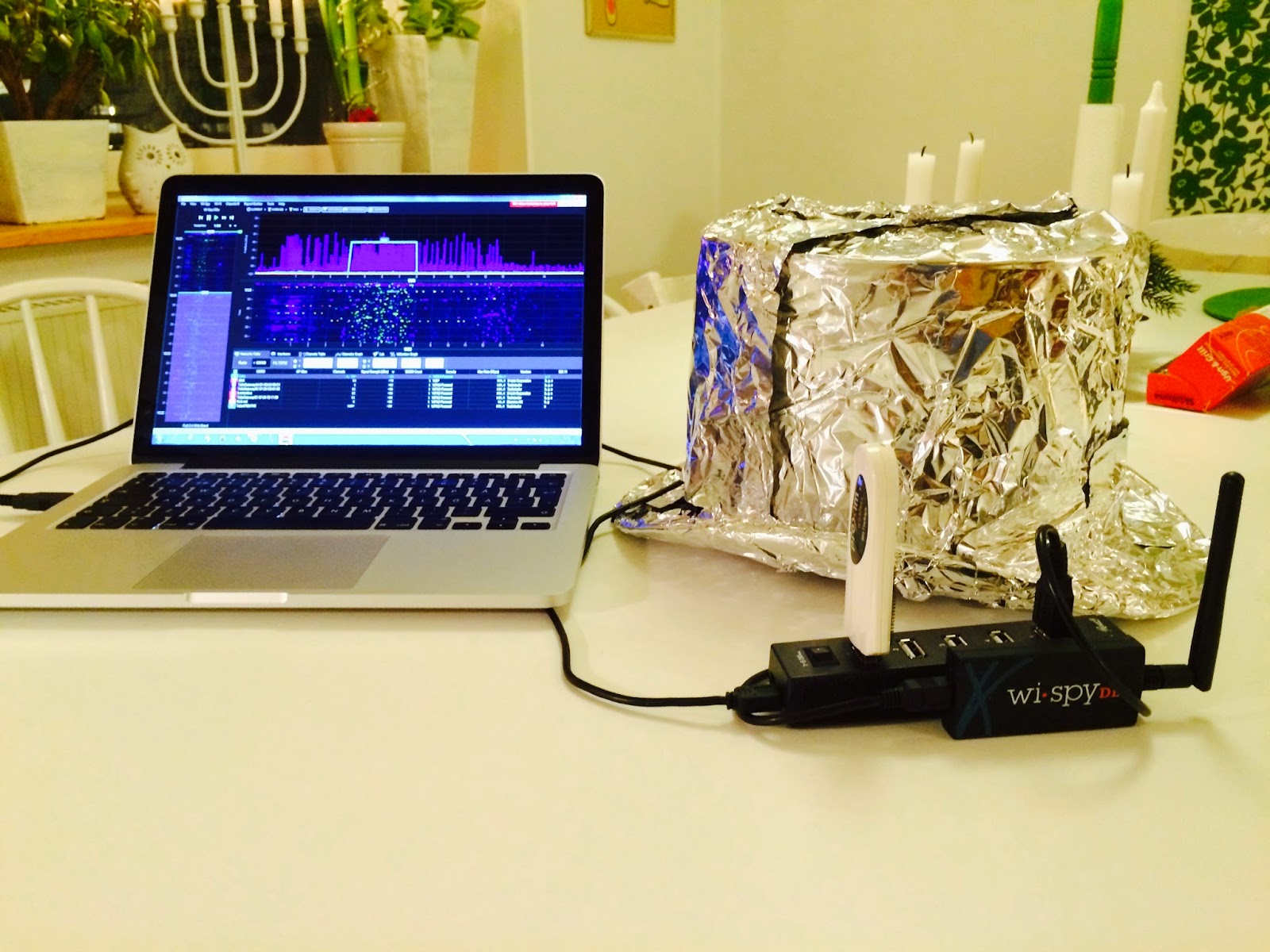Regarding the foil we'll use standard household aluminum foil in a layer or two and then measure the difference with or without foil in 2.4Ghz with Airmagnet Survey Pro. We'll also have a look at the RF spectrum how this might change. I'll use my Cisco Meraki MR26 located in a closet about 8 meters away as the access point and RF emitter. The MR26 operates at channel 6 in 2.4Ghz at full power which should mean about 23dBm EIRP for the beacons transmitted at the lowest basic rate which is at 6Mbit/s OFDM modulation (since the legacy data rates are disabled in the Meraki Dashboard).
The results in Airmagnet Survey with the NIC Proxim 8494 were as follows:
Hat without foil: -66dBm
Hat with foil: -74dBm
I'd say that the variance during the measurements were about +/- 2dB and I guess it can be explained by the kids runnings around in our house playing seek and hide. Anyway we can be pretty sure that the attenuation in this case is roughly 8dB.
It was possible to (maybe..) notice a slight change in the spectrum during the two tests:
Hat without foil:
Hat with foil:
So will the hat protect me? Should I perhaps wear it? Personally I doubt that the risks of RF from access points and clients can result in cancer or other health issues. The Swedish Radiation Safety Authority state that "no health risks are posed by exposure to base stations for mobile telephony, wireless networks nor similar transmitters"
But they also state...
"However, when it comes to long-term use of mobile phones, there is a slight suspicion that it has an impact on human health. This factor combined with people’s widespread and regular use of mobile phones today has led to the Swedish Radiation Safety Authority’s conclusion that reducing unnecessary exposure is justified"
Alright - if we live long-term enough we'll know ;-)
BTW - there are some vendors that produce RF tents and shelters, here we get about 50-70 dB of attenuation, have a look here.
/Fredrik








